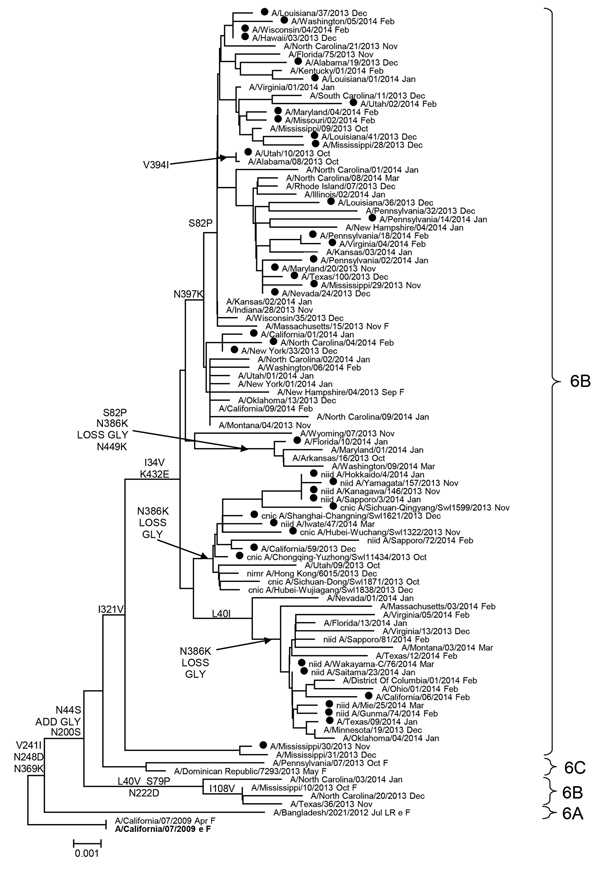Volume 21, Number 1—January 2015
Dispatch
Oseltamivir-Resistant Influenza A(H1N1)pdm09 Viruses, United States, 2013–14
Figure 2

Figure 2. Evolutionary relationships among influenza A (H1N1)pdm09 virus neuraminidase genes, United States, 2013–14. Phylogenetic tree was generated by using MEGA software v5.2 (http://www.megasoftware.net/) and the neighbor-joining method. Evolutionary distances were computed by using the maximum composite likelihood model. Analysis included 100 representative A(H1N1)pdm09 neuraminidase gene sequences. Scale bar indicates nucleotide substitutions per site. Solid circles indicate oseltamivir-resistant H275Y markers. A/California/07/2009 (current Northern Hemisphere vaccine strain) virus was used as a reference for ancestry (root) and numbering. F, Centers for Disease Control and Prevention reference antigen; Oct, October 2013; Nov, November 2013; Dec, December 2013; Jan, January 2014; Feb, February 2014; GLY, glycosylation.
1Members of the 2013–14 US Antiviral Working Group are listed at the end of this article.